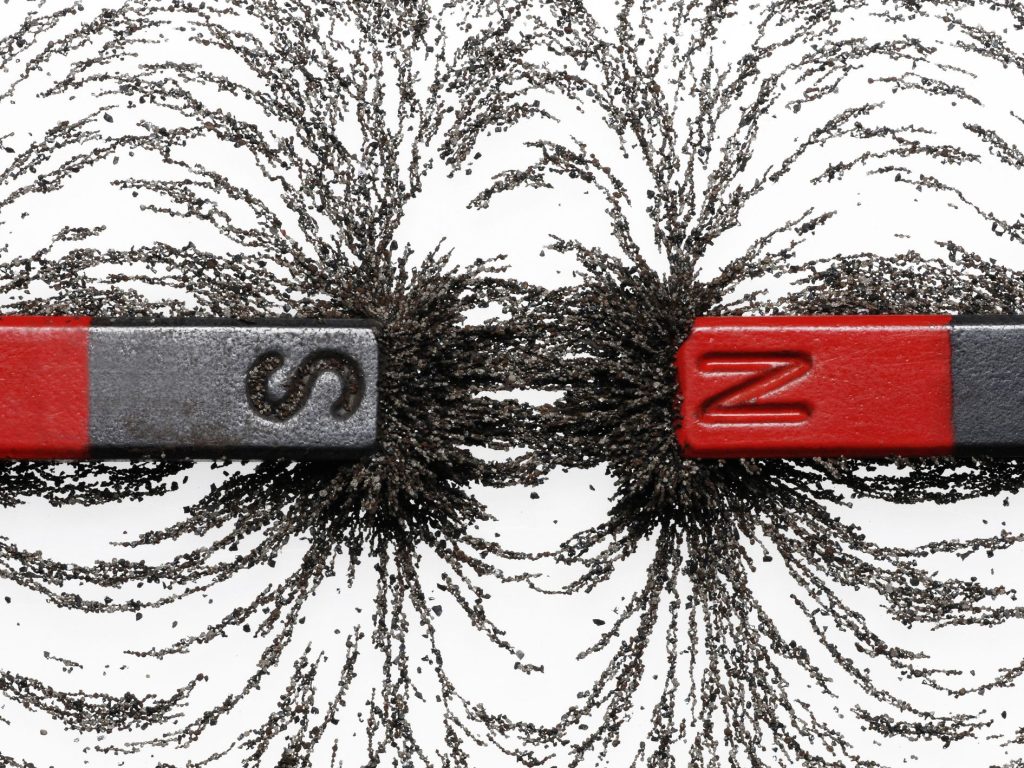Magnetism is a result of the electromagnetic force, one of the four fundamental forces of the universe. Magnets are also one of the most tangible ways to explore the quantum nature of our world, since the push-and-pull of magnetism can be obviously felt. Looking for some magnetism exploration ideas? Check out these fun activities below!
Activity #1: Students will enjoy watching this video of Google Science Fair winner Fionn Ferreira explaining the development of his technique for using magnetic ferrofluid to clean up ocean microplastics:
Inspired by this inventor? Start keeping a journal of ideas and observations that could be developed into a new invention!
Materials that can be turned into magnets, and also respond to magnets, are called ferromagnetic. The most common ferromagnetic materials are Iron, Nickel, Cobalt and Neodymium. Steel has Iron in it, so Steel is also attracted to magnets.
Activity #2: Find out all the things in your house that respond to magnets. Using a magnet, try attaching it to different objects in your house. Which objects respond to the magnet, and which objects don’t? The ones that respond to the magnet contain ferromagnetic materials. Gather as many of these ferromagnetic items as you can.
Here’s a short video that reviews how to test if things are ferromagnetic:
Activity #3: Build a magnetic sculpture. Using the ferromagnetic items you found in Activity #1, use your magnets as a base and build the largest magnetic sculpture that you can. As you add each piece, those objects then become magnetized and you can connect even more items to them (within a limit). Isn’t that cool?
It’s fun to watch these amazing magnetic sculptures being formed and broken apart:
Activity #4: See if you can control the smaller ferromagnetic items (found in Activity #2) from a short distance using your magnets. Try pulling and pushing these small objects through a plastic cup filled with water, or through a thin flat piece of plastic, wood or cardboard. Magnetic fields extend through objects and water, but ferromagnetic objects need to be within close range for them to respond.
Here’s a video that illustrates this concept:
If you have a thin tabletop that can be used, you can even setup a magnetic race! See who can reach the finish line first using magnets to push or pull small ferromagnetic objects.
Activity #5: Brainstorm ideas for using magnets in different ways. Grab a notebook and turn it into your Idea Journal. What are some ways that magnets could be used? Jot down your thoughts and drawings. Let your imagination run wild!
Here’s an example of a new idea for using magnetism to make a self-healing electrical fabric:

